#Père Tanguy
Explore tagged Tumblr posts
Photo

MWW Artwork of the Day (6/18/23) Vincent van Gogh (Dutch, 1853-1890) Portrait of Père Tanguy (Autumn 1887) Oil on canvas, 92 x 75 cm. Musée Rodin, Paris
The brightly colored painting and confident subject represent a shift in Vincent's attitude. Van Gogh called his use of bright colors "gymnastics" that through experimentation created great depth, harmony and balance in his work. The painting contains a background of Van Gogh's Japanese prints that were sold at Tanguy's shop. On top of Tanguy's hat is Mount Fuji; Kabuki actors share the wall with cherry trees in bloom. The Japanese paintings represent Van Gogh's search for serenity, which he describes in a letter to his sister during this period, "Having as much of this serenity as possible, even though one knows little -- nothing -- for certain, is perhaps a better remedy for all diseases than all the things that are sold at the chemist's shop." In an effort to capture serenity in his painting, Van Gogh paints Tanguy with a calm, contemplative nature. Historian of Symbolism Naomi Maurer describes him as having the "iconic tranquility of Buddha.
22 notes
·
View notes
Text

-Père Tanguy-
#art#art history#culture#curators#history#museums#artwork#van gogh#vincent van gogh#vintage#painting
222 notes
·
View notes
Text
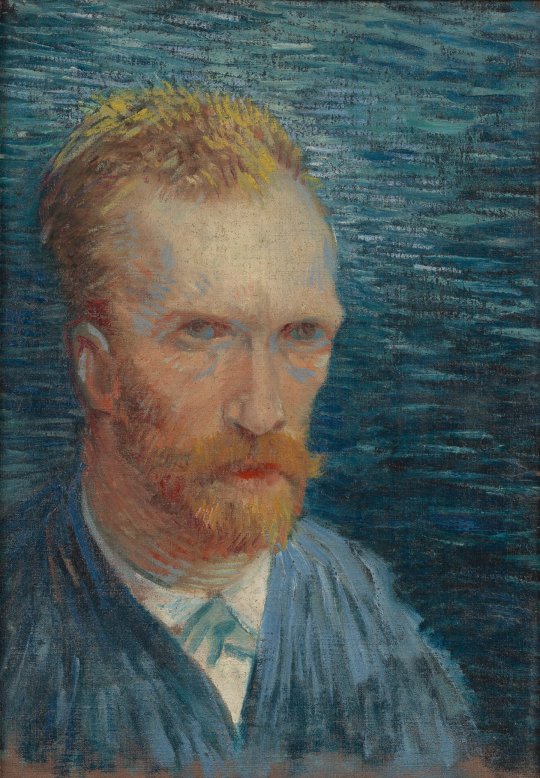
Vincent van Gogh ֍ Self-portrait (1887)
For this self-portrait, Van Gogh used many shades of blue. In the background, but also in his face: he even made the whites of his eyes blue.
Out of lack of money, he painted the self-portrait on the back of one of his still lifes. He no longer had a new canvas in the house. Previously, he had received painting materials on credit or in exchange for his paintings. He received it from Père Tanguy, owner of a Parisian art supplies shop. But that had stopped because of his wife. In a letter to his brother Theo, Vincent angrily described her as an 'old witch'.
9 notes
·
View notes
Text
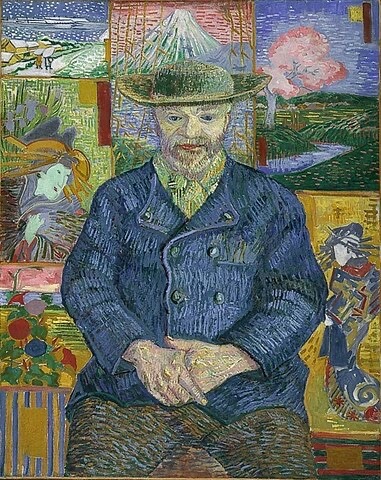

Vincent van Gogh, Portrait of Père Tanguy, 1887
Gihachiro Okuyama, Old Man Tanguy - Van Gogh, Showa era, 1926-1989, Woodblock print
#Gihachiro Okuyama#vincent van gogh#japanese prints#japanese art#japanese artist#japanese aesthetic#japonisme#japonism#post impressionism#post impressionist art#dutch artist#dutch painter#dutch painting#art on tumblr#aesthetic#beauty#modern art#art history#aesthetictumblr#tumblraesthetic#tumblrpic#tumblrpictures#tumblr art#tumblrstyle#artists on tumblr
30 notes
·
View notes
Text
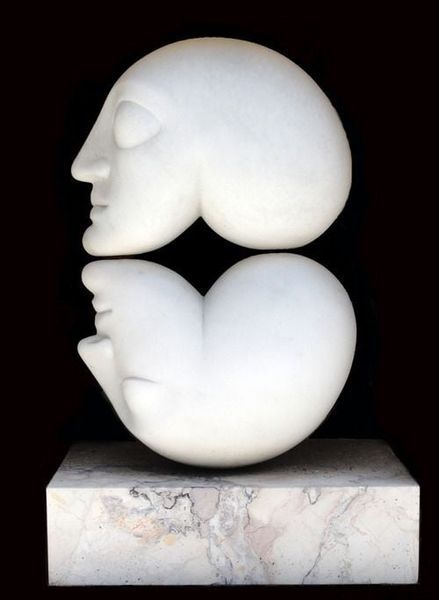

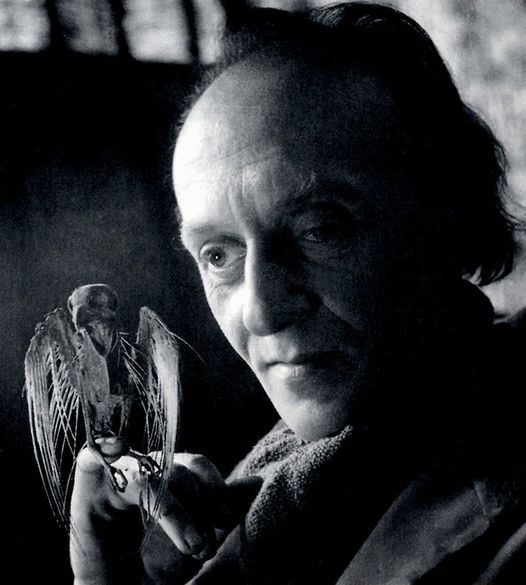
Victor Brauner (b in Moldova, 1903 - 1966, Paris)
Romanian painter, sculptor and draughtsman, active in France. As a child, he shared his father’s passionate interest in spiritualism, heralding a lasting preoccupation with the occult. In 1912 he accompanied his family to Vienna, and from 1916 to 1918 attended the evangelical school at Braila, near Galati, studying zoology with great enthusiasm; he also started to paint.
In 1921 he spent a brief period at the School of Fine Arts in Bucharest, where his first exhibition was held in 1924 at the Galerie Mozart. The same year, Brauner and the poet Ilarie Voronca founded the review 75HP, in which he published his manifesto of ‘Pictopoésie’ and an article on ‘Le Surrationalisme’. From 1928 until 1931 he worked with the Dada and Surrealist review UNU, which reproduced his drawings and paintings.
Settling in Paris in 1930, he met Constantin Brancusi, who introduced him to photography, and Yves Tanguy, through whom he met the major Surrealists. He lived in the same building as Tanguy and Alberto Giacometti. His premonitory Self-portrait with Enucleated Eye (1931; Paris, priv. col.) became a cause célèbre for the Surrealists, whom he joined officially in 1932.
André Breton wrote the introduction for his first one-man show at the Galerie Pierre in 1934, the year of Monsieur K’s Power of Concentration (Paris, priv. col.) and the Strange Case of Monsieur K (priv. col.), departures from Brauner’s earlier work and reminiscent of Alfred Jarry’s Père Ubu. Returning to Bucharest briefly in 1935, he joined the clandestine Romanian Communist Party but left in 1936 at the beginning of the Soviet show trials.
http://www.all-art.org/art_20th_century/brauner2.html
31 notes
·
View notes
Text
In the presence of a number of his painter friends – Bernard, Laval, Lucien Pissarro and Père Tanguy – Van Gogh was buried in a sunny spot among the wheat fields. Bernard described to Aurier how the coffin had been covered with yellow flowers, ‘his favourite colour […] a symbol of the light of which he dreamed both in his heart and in his work. Close by, too, his easel, his camp stool and his brushes had been placed on the ground beside the coffin.
Ronald de Leeuw, from ‘The Letters of Vincent van Gogh’, tr. Arnold Pomerans
62 notes
·
View notes
Text

Je n’avais jamais rien de lui, mais en entendant un conseil d’un libraire à un client (je tendais l’oreille), j’ai été tentée, et ma foi, je n’ai pas regretté.
En résumé, et je ne spoile rien puisque ce que je vais dire là est contenu dans les premières pages, un homme ordinaire a jeté un autre homme, un promoteur immobilier, à la mer et l’a laissé se noyer. Tout le reste de cet assez court roman sera son quasi monologue, face au juge, pour expliquer ce qui l’a conduit à ce geste meurtrier.
C’est un peu comme un polar à l’envers, les mobiles apparaissent après la révélation de l’identité du meurtrier. Et ces mobiles sont complexes, et variés ; ils relèvent de la moralité, mais aussi de ce sentiment d’enlisement des classes moyennes, déclassées de surcroît, dans ce coin de Bretagne dépeuplé, où les gens rêvent, comme dans la chanson de Souchon, « d’un mieux d’un rêve d’un cheval », ils essaient de sortir d’une forme de torpeur, et se laissent alors parfois embobiner par des promesses clinquantes. On perçoit aussi dans le discours du narrateur la difficulté d’un père, qui sent et sait ce qu’il montre à son fils de ses divers échecs, qui sent ce qu’il lui transmet malgré lui, cette conscience aiguë de ce message mortifère qu’il lui passe comme un poison, malgré lui donc, mais palpable tout de même et impossible à travestir (les enfants comprennent tout, surtout ce qu’il n’y a pas dans les mots).
Le climat de cette presqu’île bretonne, son paysage, semblent s’immiscer dans l’écriture de Tanguy Viel, et c’est assez éblouissant. Un rythme dans les phrases, une acuité dans le choix des mots, une profonde mélancolie un peu teintée de sarcasme. C’est sombre, mais terriblement juste, sans emphase. On est devant un tableau aux teintes grises, mais riche de nuances.
La maîtrise du style et la justesse des portraits, la logique sophistiquée mais implacable des événements font de ce roman, à mon sens, un petit bijou de polar social, quasi métaphysique.
3 notes
·
View notes
Text
Super début de journée (non)
Je me lève, normal, comme tous les jours. Ma mère : "Bonjour, bonne fête !"
Moi je ne comprend pas, logique. C'est pas mon anniversaire ou tout autre truc du genre. Du coup je fais la tête je-comprend-pas-ce-que-tu-me-dis-la.
Donc ma mère continue : "Bah oui, c'est la fête des Emma aujourd'hui !"
J'adore la vie.
C'est le genre de truc, habituellement je m'en fous complètement. Mais malgré ma forte insensibilité et fort manque d'émotion, ah venant de ma mère ça fait bien mal quand même. C'est ce que j'appelle une "fissure dans ma glace". Il n'y a que deux personnes qui peuvent me faire mal, ce sont ma mère et ma sœur de cœur Rousil (pseudo hein).
Plus sérieusement, je devrais lui dire que je suis trans. Mais pour le moment j'en suis incapable. C'est pas sa faute si elle dit ce genre de trucs par rapport à mon deadname, mais c'est de sa faute que j'arrive pas à lui dire.
Elle s'est foutue de ma gueule une fois, pas deux.
Je ne sais plus quand, elle avait regardé le téléfilm "Il est elle" (du coup c'était quand il est passé à la télé). Moi c'est dans le sens inverse, mais je me suis dit "elle regarde un truc sur les trans sans rien dire de négatif, c'est bon signe !", rien de mieux pour mettre en confiance.
À ce moment-là, j'assumais ma transidentité seulement IVL et avec ma sœur. Je l'avais vaguement dit à mes amis au collège en 3e, sans demander un quelconque changement de comportement par rapport à moi (changement de prénom ou de pronom etc). Il n'y a qu'aujourd'hui que mes amis IRL sont au courant et s'adressent à moi avec mon nouveau nom. Je pensais que ce serait mieux si ma mère était la première personne à savoir (IVL c'était une sorte de "test", pour me rassurer, sans oublier que pendant longtemps j'étais un peu transphobe envers moi-même) et qu'elle pourrait donc choisir mon nom. Seulement quelques mois après le téléfilm (car je manque beaucoup de courage) j'ai fini par lui en parler. Sur le moment elle n'a rien dit, elle était juste gentille. Je me suis dit que c'était bon. Mais quelques jours plus tard, elle se met en colère contre moi et dit que si je lui avait dit que j'étais transgenre, c'était un mensonge pour lui faire pitié, pour pas qu'elle me punisse etc. Je n'ai pas trop compris la logique mais elle ne m'en a jamais reparlé après. Il n'y a que cette année, je ne sais plus quand exactement, je lui ai dit que ça m'avait blessé alors qu'elle disait que j'étais méchant avec elle (alors que je prend bien soin de ne rien lui dire de blessant, contrairement à elle). Elle a fait mine de pas s'en souvenir (je ne sais pas si c'est vrai ou non je ne suis pas dans sa tête) et s'est excusée. Elle m'a demandé l'air inquiète si j'avais encore des "doutes" (alors que quand je lui en avait parlé je lui ai jamais dit que j'avais des doutes, mais que j'étais bel et bien transgenre mais bon...). Je sais pas pourquoi j'ai bloqué, et je lui ai dit que j'étais cisgenre et qu'il n'y a aucun problème. Comme je lui avais avoué ça durant une dispute, j'avais peur qu'elle aie la même réflexion.
Depuis je suis complètement bloqué, je n'arrive pas à lui dire. Je sais même pas comment je devrais faire. Je ne sais pas comment ça va finir.
Mais bon pour avancer faut bien que je lui dise ? mais je sais que je vais pas le faire à moins qu'il arrive quelque chose de grave ou une "illumination".
Je vis seul avec ma mère, personne pour m'aider.
Ma petite sœur de cœur qui m'a beaucoup soutenu a déménagé, on ne se parle plus que par messagerie. Son soutien via messagerie est... beaucoup moins utile ? Elle fait de son mieux, mais j'aurais besoin d'elle à côté de moi.
Je ne connais personne de transgenre IRL, et IVL je n'ose pas embêter mon amie transgenre avec ça.
Mon père n'est pas méchant, mais il vit loin et n'a pas de téléphone portable. Pour le contacter je devrais appeler sur le fixe, et donc parler à mes grand parents avec lesquels j'ai coupé les ponts car toxiques (car mon père est un Tanguy XD). C'est dommage car c'est quelqu'un de compréhensif, même quand il a découvert via GTA (oui le jeu) que j'étais "lesbienne" (je raconterais ça plus tard c'était hilarant XD). du coup ça fait plusieurs années que je ne peux plus lui parler.
Mon ancien demi-grand frère nous a abandonnés il y a longtemps en nous piquant de l'argent. Je sais même pas s'il est vivant mdr.
En bref, je vis seul avec ma mère qui n'a confiance en moi que parce que "je suis une fille", et qui a peur dès que j'ai un comportement trop masculin. Comment je devrais faire moi, pour lui dire que je suis du même genre que tous ceux qui lui ont pourri sa vie ? Même moi je ne me comprend pas, alors elle...
#Je raconte ma vie#Ma vie#Mère#Relation familiale#Famille#Père#Coming out#Problème#Problèmes#Dispute#Disputes#Relation mère-fils#Relation mère-fille#Relation avec sa mère#Il est elle#Blocage#Blessure#Deadname#trans#transgenre#transgenre ftm#trans ftm#transidentité#ftm trans#ftm transgenre#transmasc#transmasculin#garçon trans#garçon transgenre#en français
2 notes
·
View notes
Text
i loooooooooooove when an edible hits me like

Portrait of Père Tanguy, Paris, 1887-1888.
5 notes
·
View notes
Text
Navegando los Antecedentes del Arte Moderno: Una Mirada al Pasado
El modernismo, como muchos periodos de la historia, fue un ampio y diverso movimiento cultural y artístico que, desde principios del siglo XX y aprovechando los precedentes de finales del siglo XIX, se caracterizó por rechazar las convenciones tradicionales para favorecer el proceso experimental y las innovaciones en distintas disciplinas dentro del área de las bellas artes.

Portrait of Père Tanguy por Vincent Van Vogh
Los artistas de este periodo buscaban romper con normas y estilos establecidos, utilizando nuevas formas de expresión que reflejaran la complejidad de la sociedad influenciada por una serie de eventos históricos, culturales y filosóficos. Uno de los que tuvo mayor influencia fue la Revolución Industrial, que trajo consigo una tranformación radical dentro de las sociedades, tecnología y economía.
La búsqueda de nuevas formas de expresión también fue alimentada por la agitación y caos político y social, así como por avances en la ciencia y la filosofía. Los artistas buscaban distanciarse de las tradiciones académicas y explorar nuevas formas de representación que reflejaran la complejidad y la diversidad del mundo en evolución.
¿Desde qué año se puede considerar que el arte es moderno?
La fecha exacta en la que se puede considerar que el arte se volvió "moderno" es objeto de debate entre los historiadores del arte. Sin embargo, muchos sitúan el comienzo del arte moderno en el siglo XIX, con la aparición de movimientos como el Romanticismo, el Realismo y el Impresionismo. Estos movimientos artísticos desafiaron las convenciones tradicionales y exploraron nuevas formas de representación visual.
¿Cuáles son las ramas del arte moderno?
El arte moderno es un término amplio que abarca una gran variedad de movimientos y corrientes artísticas. Algunas de las ramas más destacadas incluyen:
Impresionismo: Con artistas como Claude Monet y Edgar Degas, este movimiento buscó capturar la luz y la atmósfera en la pintura a través de pinceladas sueltas y colores vibrantes.
Expresionismo: Artistas como Edvard Munch y Wassily Kandinsky exploraron la expresión emocional y la abstracción en sus obras, rompiendo con la representación tradicional.
Cubismo: Con figuras destacadas como Pablo Picasso y Georges Braque, el cubismo descomponía objetos y figuras en formas geométricas, redefiniendo la representación visual.
Surrealismo: Encabezado por Salvador Dalí y André Breton, este movimiento exploró el mundo de los sueños y lo irracional a través de imágenes sorprendentes y desconcertantes.
¿Quiénes son los precursores?
Diversos artistas y teóricos contribuyeron a los antecedentes del arte moderno. Entre ellos se encuentran figuras como William Turner, quien anticipó el impresionismo con su manejo innovador de la luz y el color, así como Gustave Courbet, cuyo realismo desafiante marcó un cambio radical en la pintura.
#lunas de alma#featured#arte moderno#modern art#art history#historia del arte#historia del arte moderno#modern art history#vincent van gogh
1 note
·
View note
Text
Père Tanguy, a name that ignites curiosity. Julien François Tanguy, more commonly referred to as Père (Father) Tanguy, was a paint dealer in Paris. But he was not just a merchant, he was a friend and supporter of many struggling artists of his time, including our very own Vincent van Gogh.
Imagine Père Tanguy's small paint shop, a sanctuary for artists, offering the colors that would define eras. Tanguy's compassionate personality and unique connection with artists are undoubtedly part of what inspired van Gogh to dedicate a painting to him.
#art#culture#art history#artwork#painter#painting#artblog#home decor#Wall art#van gogh#vincent van gogh#portrait of pere tanguy#dutch painter#dutch artist#oil painting#friendship
0 notes
Text
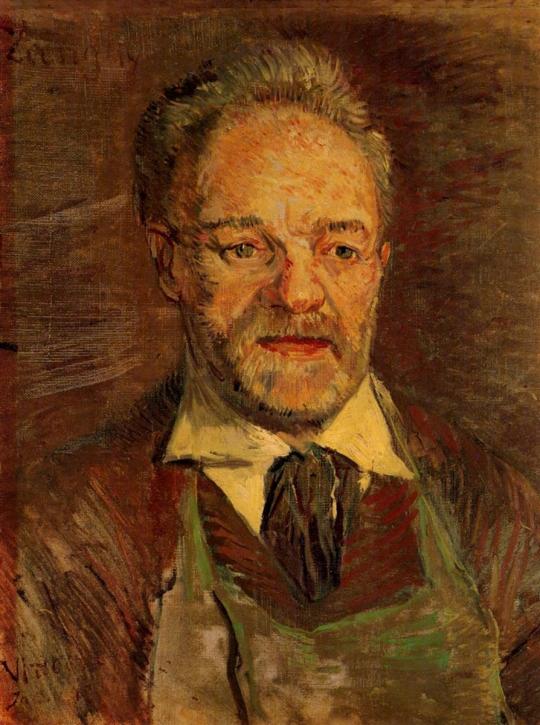
-Portrait of Père Tanguy-
#art#art history#culture#curators#history#artwork#museums#van gogh#vincent van gogh#vintage#painting
111 notes
·
View notes
Photo
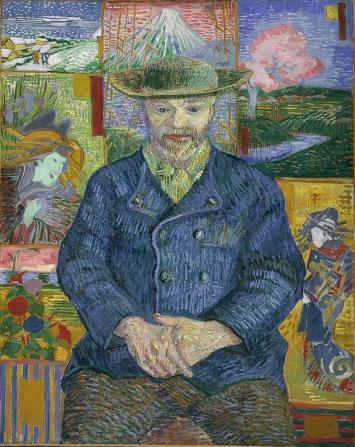
“He felt everything, poor Vincent! He felt too much! It made him want the impossible.” - Père Tanguy. Portrait of Père Tanguy, painted by Vincent van Gogh in 1887
0 notes
Text
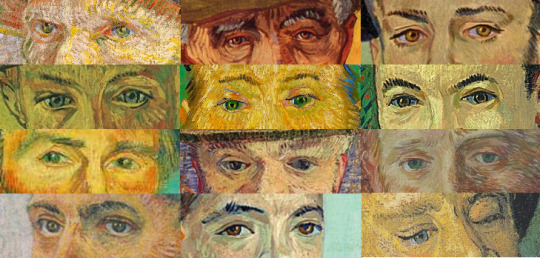
[Image ID. A 3 by 4 grid of portraits by Vincent Van Gogh, cropped to just the eyes. All of the faces are warm-toned, with either brown or blue/green eyes. End ID.]
Van Gogh + Eyes
Self-Portrait with a Straw Hat (1887) / Portrait of Patience Escalier (1888) / Portrait of Armand Roulin (1888) / Portrait of Camille Roulin (1888) / Portrait of the Postman Joseph Roulin (1888) / Portrait of Doctor Félix Rey (1889) / The Smoker (1888) / Portrait of Père Tanguy (1887) / Portrait of the Art-Trader Alexander Reid (1887) / Portrait of a Male Person with Cap (1886/1887) / La Mousmé (1888) / Portrait of a One-Eyed Man (1888)
#van gogh#went to a van gogh exhibit the other day and the way he paints eyes really just#gets me feelin something#also noses ik i cropped them but he does noses + blushes so fucking well#god
30 notes
·
View notes
Photo

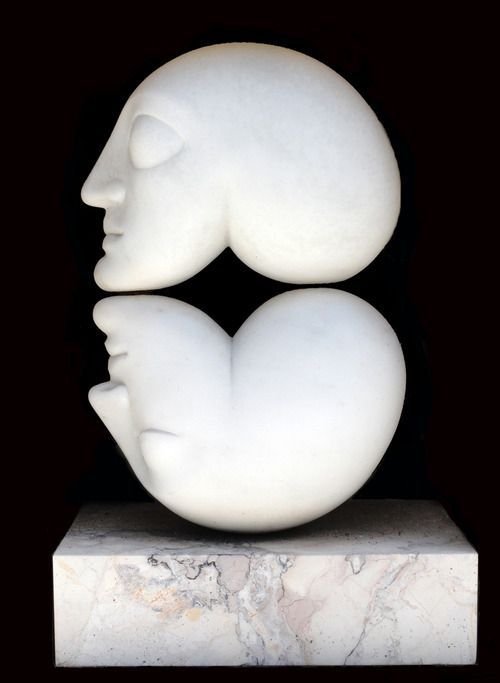

Victor Brauner (b in Moldova, 1903 - 1966, Paris)
Romanian painter, sculptor and draughtsman, active in France. As a child, he shared his father’s passionate interest in spiritualism, heralding a lasting preoccupation with the occult. In 1912 he accompanied his family to Vienna, and from 1916 to 1918 attended the evangelical school at Braila, near Galati, studying zoology with great enthusiasm; he also started to paint.
In 1921 he spent a brief period at the School of Fine Arts in Bucharest, where his first exhibition was held in 1924 at the Galerie Mozart. The same year, Brauner and the poet Ilarie Voronca founded the review 75HP, in which he published his manifesto of ‘Pictopoésie’ and an article on ‘Le Surrationalisme’. From 1928 until 1931 he worked with the Dada and Surrealist review UNU, which reproduced his drawings and paintings. Settling in Paris in 1930, he met Constantin Brancusi, who introduced him to photography, and Yves Tanguy, through whom he met the major Surrealists. He lived in the same building as Tanguy and Alberto Giacometti. His premonitory Self-portrait with Enucleated Eye (1931; Paris, priv. col.) became a cause célèbre for the Surrealists, whom he joined officially in 1932.
André Breton wrote the introduction for his first one-man show at the Galerie Pierre in 1934, the year of Monsieur K’s Power of Concentration (Paris, priv. col.) and the Strange Case of Monsieur K (priv. col.), departures from Brauner’s earlier work and reminiscent of Alfred Jarry’s Père Ubu. Returning to Bucharest briefly in 1935, he joined the clandestine Romanian Communist Party but left in 1936 at the beginning of the Soviet show trials.
http://www.all-art.org/art_20th_century/brauner2.html
4 notes
·
View notes
